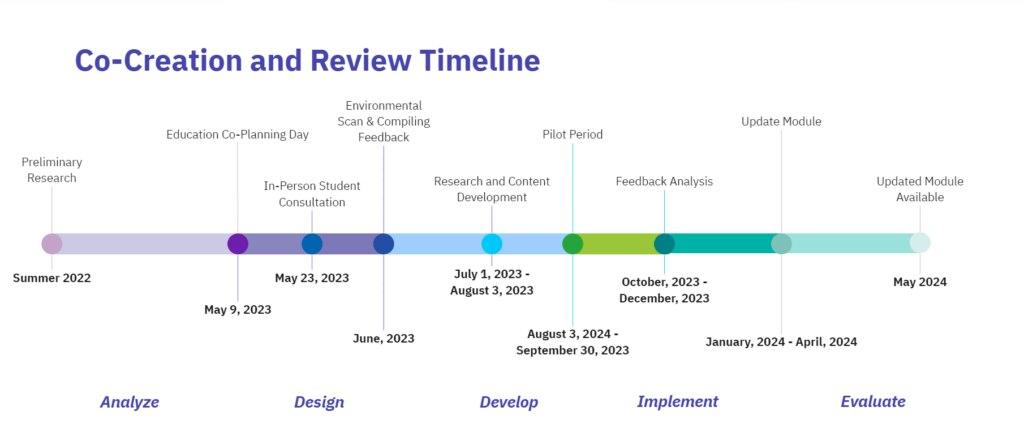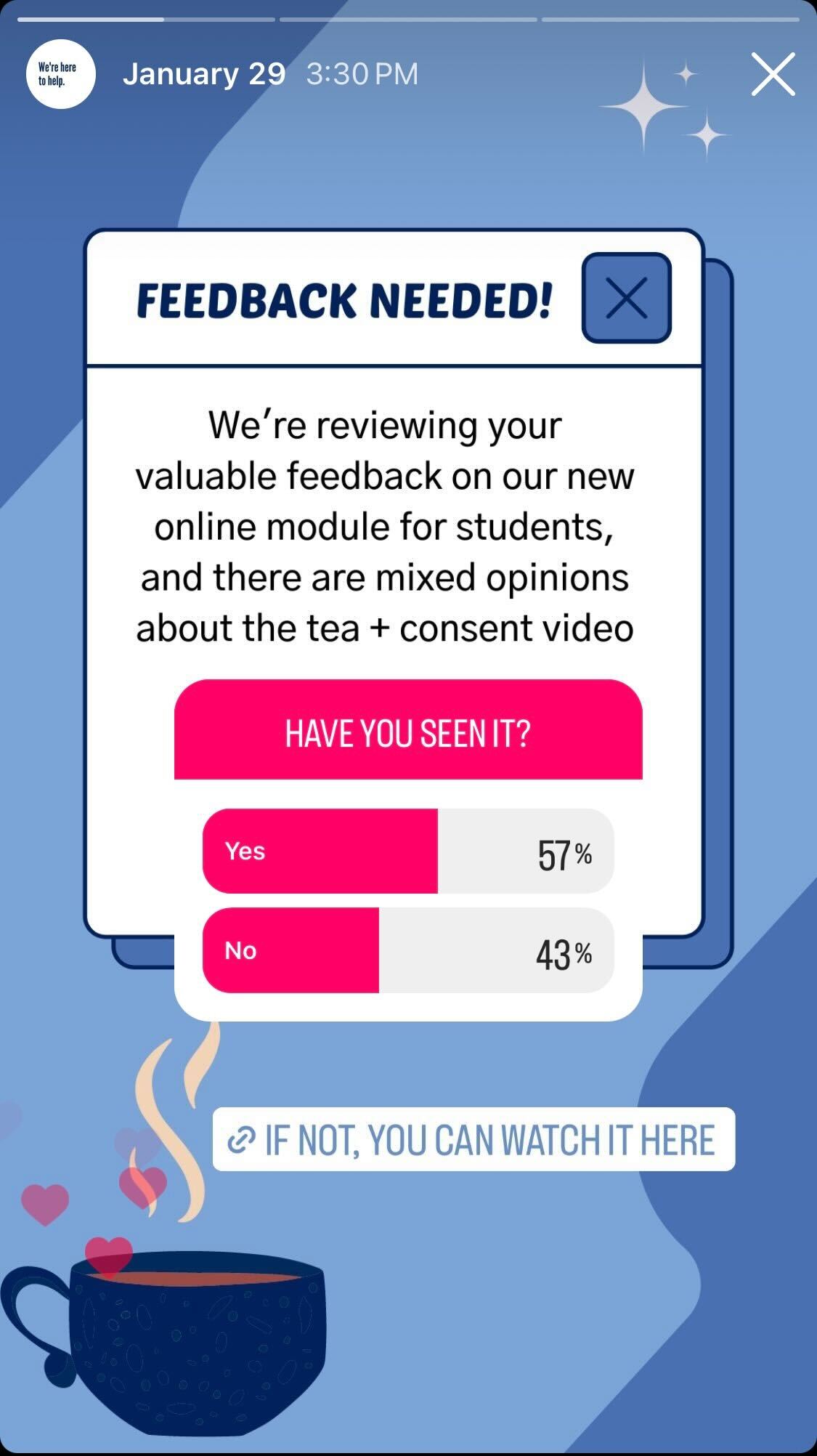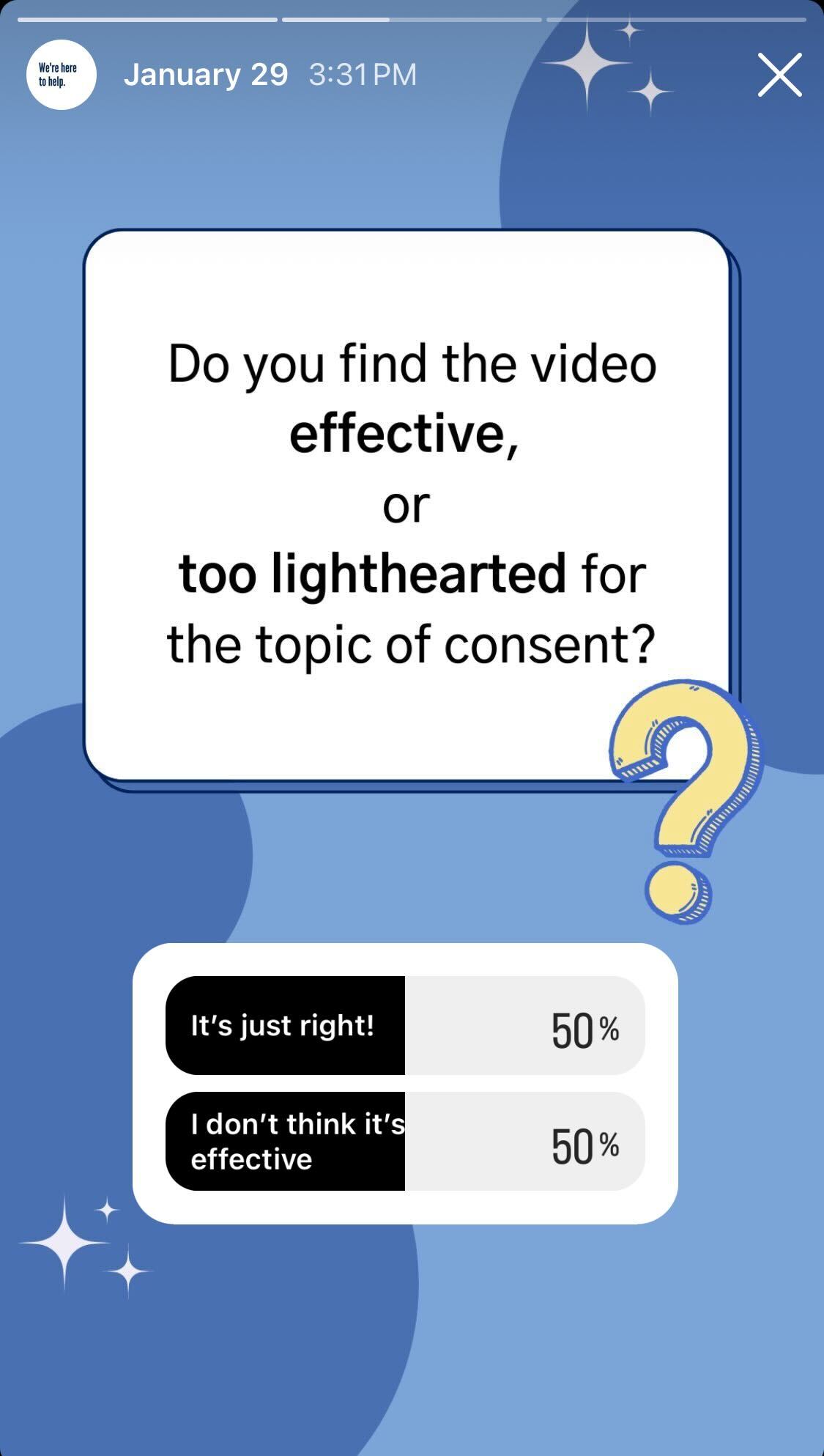Co-Creating Change: Exploring the Development of Our Online Module for Students
The new online training module for students from the Sexual Violence Prevention & Support Centre (SVPS Centre) is now reflective of feedback received from more than 270 University of Toronto (U of T) community members, following extensive consultation and the completion of the module’s pilot phase.
The module, Building a Culture of Consent at the University of Toronto, launched as a pilot project in August 2023 with the goal of teaching students about consent, and how to incorporate it into building boundaries, communication, and healthy relationships. This version of the module was informed by input received at an open student consultation and grounded in evidence-based research on best practices in consent education.
The vast majority of the feedback received throughout this period was positive, with over 90 per cent of participants indicating that they were overall satisfied or very satisfied with the module.
The SVPS Centre received some exceptionally thoughtful feedback throughout this process. See below for some of the key changes requested by participants and how they were addressed in the final, updated module.
Want to learn more? Because we received so much helpful feedback, the information above is not inclusive of every identified opportunity for improvement and resulting action. A detailed report about the feedback we received and how it was actioned is available—send us an email at svpsprograms@utoronto.ca to learn more.



